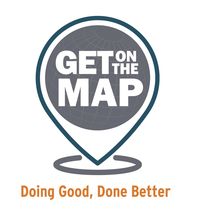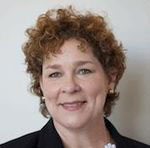Doing Good Is About to Get Better
 As the president of a regional association, I regularly need to know what funders in my region are supporting and where they are working. Usually, to get that information, my colleagues and I need to make a series of calls, send out emails and surveys, schedule meetings, and do some real sleuthing. And what we continue to end up with is representative of only a small portion of what is really happening around us. Sound familiar?
As the president of a regional association, I regularly need to know what funders in my region are supporting and where they are working. Usually, to get that information, my colleagues and I need to make a series of calls, send out emails and surveys, schedule meetings, and do some real sleuthing. And what we continue to end up with is representative of only a small portion of what is really happening around us. Sound familiar?
This lack of data to inform our work is even more problematic when coupled with all the questions and challenges raised by organizations that want to force their interpretation and agendas on that work. Unfortunately, we can't adequately respond because we don't really know who our collective dollars are serving and whether our grantees mirror the communities we are trying to serve. Because we don't have the data that supports the story we want to tell, others continue to write our story for us.
This is particularly important as we struggle with conversations around equity and justice in our communities and as we prepare for a looming conversation around charitable regulation. Philanthropy needs to be able to demonstrate its commitment to the public good by showing that its investments in community development, civic engagement, and social innovation reach across demographic and economic barriers. Given our special status as a tax-advantaged sector, we need to demonstrate that we are accountable and serve the public good.
In an earlier post, you heard from Joyce White, president of Grantmakers of Oregon and Southwest Washington, who shared details of her journey to collect more complete and meaningful data from funders in her region. When the Forum for Regional Associations of Grantmakers and Foundation Center formed a strategic alliance to improve the quality and effectiveness of grantmaking nationwide via data, research, and tools, the successful pilot in Oregon and southwest Washington served as a model for the rest of the country. The first focus of that partnership is a joint campaign to "Get on the Map."
Beginning this week, twenty regional associations representing over 2,700 organizations and more than $38 billion in grantmaking will work with funders across the country to harness the data that supports our individual and collective work and enables all of us to tell a more accurate version of the story of philanthropy.
The Get on the Map campaign encourages funders to share grants data using Foundation Center's eReporting standard, which is easy to export in most grants management systems. Organizations that participate by submitting their data electronically will receive a free interactive map of their own grants to use as they wish. In addition, regional associations participating in the campaign will be able to provide, as a member service, access to a map of their members' giving data behind their firewalls. Delivered via Foundation Center's powerful Foundation Maps platform, the maps will provide funders with "anytime access" to timely information about the activities of their peers, regional funding gaps, and potential collaborations.
Just imagine: rather than making dozens of calls, you'll be able to sit at your desk and, in just a few clicks, access an interactive mapping tool that gives you current information on who is funding what and where in your community. Now imagine being able to target populations and key elements of the actual grant — not just a list of recipient institutions and organizations. That's right: you'll finally have the data you've long needed to tell a more complete and accurate story of local philanthropy to policy makers and other interested parties. And your members will have access to the information they need to connect with one another, engage in collaborations, and explore public-private partnerships. This is about useful, real-time information that helps connect us all in our work.
Get on the Map launches this week, and I encourage everyone to see for themselves the power of what the campaign can mean for philanthropy. Whether you are a small, unstaffed funder or a large, professionally managed foundation, this is an opportunity you can't afford to pass up. One of our greatest assets is our ability to learn from each other and work as a community on behalf of the public good. As you have no doubt experienced, that is difficult without good information. This is your chance – our chance – to do something about it.
This blog was cross-posted with permission from Philanthropy News Digest. You can find the original post here.

